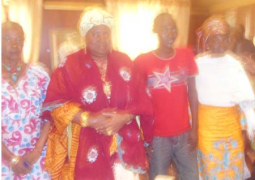He said the report also revealed that 1.9 per cent of Gambian adults age 15-49 are HIV-positive whilst 2.1 per cent of women and 1.7 per cent of men are HIV-positive.
Mr Cham, who was presenting the findings during the launching of the DHS 2013 report, also indicated that HIV prevalence is high in Mansakonko (2.9 per cent) and low in Banjul (1.1 per cent).
He told the stakeholders that the 2013 Gambia demographic and health survey was carried out by the Gambia Bureau of Statistics (GBOS) and funded by the government of The Gambia, the US Agency for International Development (USAID), the United Nations Development Program (UNDP), the United Nations Children Fund (UNICEF) and Global Fund.
According to Mr Cham, the primary objective of the 2013 GDHS was to provide up-to-date information on fertility and family planning behaviour child mortality, adult and maternal mortality, children’s nutritional status, maternal and child health, domestic violence, knowledge of HIV/AIDS, prevalence of HIV/AIDS, ANAEMIA, and malaria.
“This information is intended to assist policymakers and programme managers in evaluating and designing programme and strategies for improving health and family planning services in the country,” Mr Cham said.
He also stated that the DHS was designed to provide estimates for the whole country, for urban and rural areas, and for the eight local government areas.
He explained that some findings of the report indicated that 91 per cent of household have access to safe water and 37 per cent of households have an improved sanitation facility.
The report also showed that 45 per cent of households have electricity and 47 per cent of women and 31 per cent of men have never attended school, while 43 per cent of women and 66 per cent of men are currently employed, he stated
On findings on mortality, he said, the report further indicated that current infant mortality rate was 34 deaths per 1,000 live births and under 5 mortality rates was 54 deaths per 1,000 live births.
He told stakeholders that the survey report revealed that childhood mortality is lower among children of more educated mothers and those from wealthier households, while mortality is higher among children born less than 2 years after a previous birth.
He said the report also showed that the maternal mortality ratio for the 7 years before the survey is 433 deaths per 100,000 live births.
Mr Cham further said that findings of the survey on reproductive health had shown that 86 per cent of women received antenatal care from a skilled provider at least once and 63 per cent of women deliver in a health facility.
He said the report also indicated that 57 per cent of women were assisted at birth by a skilled provider.
He added that births occurring outside of a health facility, 76 per cent of mothers and 15 per cent of newborns received a postnatal checkup within 2 days of birth, and 43 per cent of women have at least one problem accessing healthcare for themselves when sick.
On the finding of child health, Mr Cham said the 2013 report revealed that 76 per cent of children received all basic vaccinations, and vaccination coverage is higher among children living in Basse (92 per cent) and Mansakonko (86 per cent) than among children from the poorest households.




